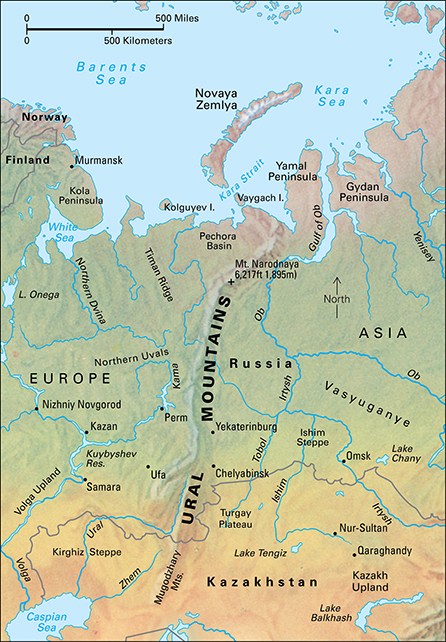Ural << YUR uhl >> Mountains extend for about 1,500 miles (2,400 kilometers) through the western part of Russia. The mountains run south from near the Arctic Ocean to about the Kazakhstan border. Many geographers consider them to be one of the boundaries between Europe and Asia. 
The Ural Mountains contain a remarkable variety and amount of mineral wealth. Salt mining there has been important since the 1500’s. Iron and copper mining and production became important in the 1700’s. The Ural region is famous for its gems and semiprecious stones, which include amethyst, beryl, emeralds, malachite, and topaz. Other mining products include bauxite, chromium, coal, copper, gold, iron ore, lead, nickel, platinum, potash, silver, and zinc. The Urals also have one of the world’s largest asbestos reserves. Oil and natural gas are found east and west of the mountains.
The industrial and mineral development of the Ural Mountains played an important part in supplying fuels, metals, and other materials for the armies of the Soviet Union during World War II. After the war ended in 1945, the Urals remained a major Soviet mining and industrial region. The industrialization of the region severely polluted the air and water in the Urals. In 1991, Russia, which had been one of the republics of the Soviet Union, became independent.
The mountains are geologically old. They were first formed about 300 million years ago. They were worn down to nearly a plain, and then formed again about 200 million years ago. Since then, they have been worn down to rounded hills, most of which rise only from 1,000 to 6,000 feet (300 to 1,800 meters). The southern range spreads as wide as about 100 miles (160 kilometers) from east to west in some places. In the north, the mountain range is narrower and less rounded. The highest peak of the Ural Mountains is Mount Narodnaya (6,217 feet, or 1,895 meters).
